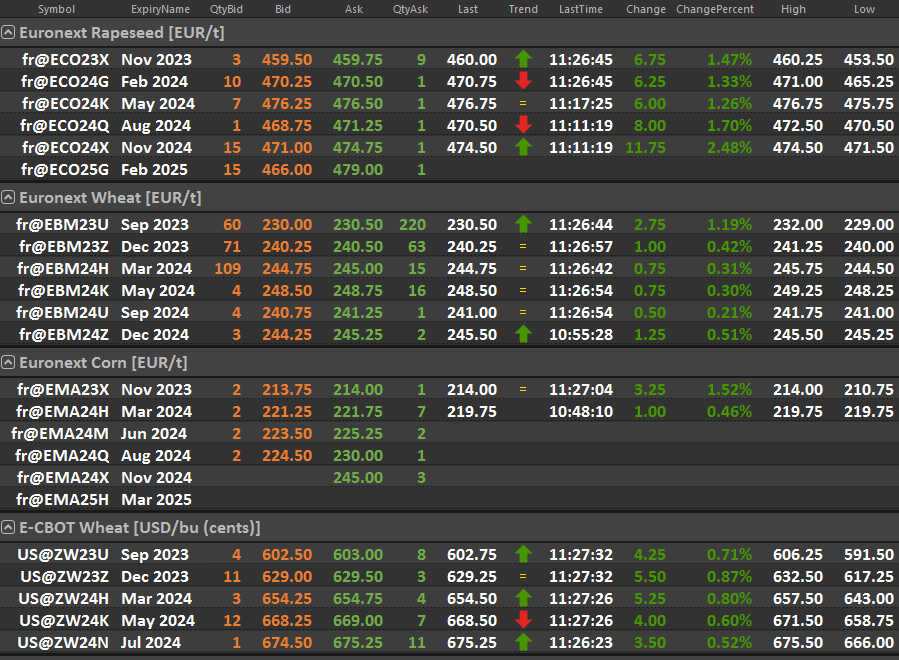
Market Solutions
TRACK COMMODITY MARKETS IN A SINGLE ENVIRONMENT
Grainbow offers a range of solutions for tracking the evolution of agricultural commodities markets. Wherever you are, this range gives you access to real-time quotations, news, reports and technical analyses.
Today, we cover the market information needs of over 450 operators in the sector in some twenty European countries. Our customers include agricultural cooperatives, retailers, manufacturers and brokers.
But what market information do these operators consult? Which markets and indicators should be monitored? How can we organize an effective watch on commodity prices?
Here’s some advice from our experts.
Physical markets are at the heart of commodity price trends. Quite simply, these are physical exchanges of goods between operators. Although some markets are not very transparent due to a lack of standardization or volumes traded (e.g. durum wheat, sunflower, organic cereals, nuts, etc.), it is still possible to obtain market prices. Most operators in the cereals sector use brokers (intermediaries) who send daily price grids to their customers. Having the prices of one’s broker(s) is a first step, but having a global base of physical prices gives operators greater perspective. A physical price base that can be exploited via charts or data extractions enables long-term price trends to be analyzed.
Futures markets known as forward markets.Futures markets have become increasingly important over the centuries. As early as the 16th century, commercial exchanges were established. Initially created to govern physical and financial transactions, today they organize almost exclusively purely financial transactions. Today, these markets are used to hedge price risks and, to a lesser extent, for speculative purposes.
There are many ways of classifying the commodities traded on the world’s futures markets. The main classifications are hard and soft.
Hard commodities are natural resources such as oil, iron, gold, gas, etc. Soft commodities, on the other hand, require human hands for their development, such as wheat, corn, cotton, cocoa, etc.
Agricultural commodities are therefore considered “soft commodities”. Here are the main futures markets for grains and oilseeds:
• Euronext : feed wheat, corn, rapeseed. Europe’s benchmark market, followed in real time by the vast majority of the continent’s operators.
• CBOT (Chicago Board Of Trade) : feed wheat, corn, rapeseed, soybeans, soybean meal, soybean oil, oats, etc. Followed on a 15-minute delay by some Europeans (for cost reasons) and in real time by Americans. .
• CME (Chicago Mercantile Exchange) : cattle, butter, dehydrated protein, milk, cheese, Euro/US Dollar, Euro/CAD Dollar. The currency futures markets are increasingly followed by Europeans, and in particular by CBOT traders who need to hedge against the forward exchange rate (Euro/US Dollar), as well as by ICE CANADA canola traders (Euro/CAD Dollar).
• ICE CANADA : canola. Canola is a derivative of rapeseed. Grown in Canada, it has superior nutritional qualities. The price of canola is strongly correlated with that of rapeseed.
• ICE LIFFE (London-based markets) : feed wheat.
• MDEX (Malaysian Derivatives Exchange) : palm oil.
• MGEX (Mineapolis Grain Exchange) : wheat.

Agricultural products other than cereals and oilseeds:
• EEX (German market): butter, milk powder, dehydrated protein, milk. Closely followed by European manufacturers.
• ICE LIFFE : soft wheat, white sugar, cocoa, coffee.
• ICE US : cotton, cocoa, coffee, sugar.
And energy-related markets (hard commodities):
• ICE ENDEX (Energy Exchange for Gas and Power) : gas, greenhouse gas emission quotas.
• ICE EUROPE : For oil, the global benchmark is Brent (due to its extraction location in the North Sea). Brent accounts for two-thirds of the world’s oil trade. WTI is the American benchmark (produced mainly in Texas, Louisiana, and North Dakota).
In addition to monitoring physical and futures prices, it’s essential to regularly read market news and analyses to gain perspective and sharpen your critical faculties. In addition to recurring news, we distinguish between fundamental and technical analysis.
Fundamental analysis is the study of supply and demand, i.e. stocks. When demand outstrips supply, prices rise, and vice versa. Many factors play a part in the variation of commodity prices:
• Weather conditions: a major factor in agricultural cultivation. Numerous weather reports are available, including rainfall levels, soil moisture, temperatures, and crop progress.
• Market context: calls for tender, lines-up, port loading, USDA balance sheet.
• Macro-economic context: movements in money market funds, indicators (e.g. CAC40) or, more generally, the economic health of the main producing countries.
• Political context: subsidies, export duties and legislation on plant protection products all have an impact on commodity prices. A product that is subsidized can discourage farmers from growing it, thus reducing supply.
• Geopolitical context: relations between countries have a major influence on commodity prices, as demonstrated by the Russian-Ukrainian conflict and the surge in grain prices in 2022.
Technical analysis is the study of charts. The idea is to understand price variations by studying curves and anticipating future movements. Technical analyses can be daily (published before the market opens), weekly or monthly (for a long-term view). Today, very few traders carry out their own technical analyses (due to lack of time), but many expert technical analyses are available.
(Sources : Société Générale, Alumneye, Le guide boursier)
Grainbow’s strength in this range?
- Our team of market analysis specialists keeps you constantly informed about the markets in the form of short, recurring news reports, fundamental market reports and technical analyses. With more than forty news items and reports a week, our analysts are there to keep an eye on the market and relay the most important information to you. Their information is available in the WSD tool. .
- An innovative platform that covers all your market information needs in terms of quotes and analysis, wherever you are (software, web and mobile application).
The other solutions of market range


What are the benefits for you?

Real-time market monitoring

Expertise and recurrent information

Intuitive and easy to use
Our others solutions
Take advantage of business software with large functional scopes
Digitalize all your processes with our intuitive and user-friendly web/mobile solutions